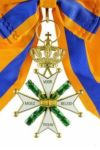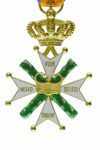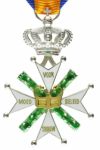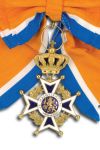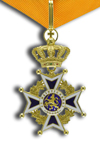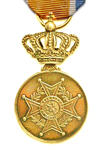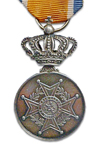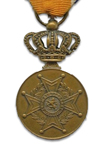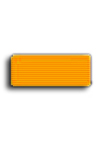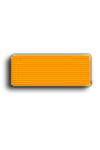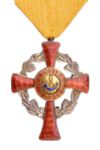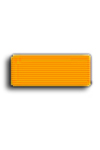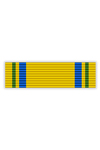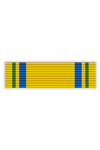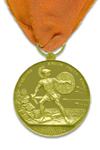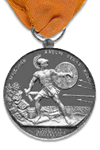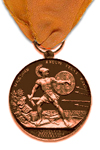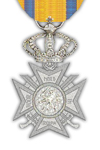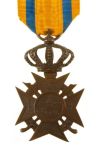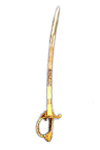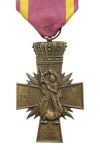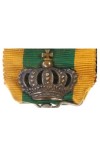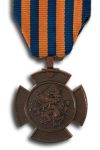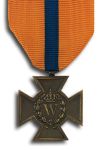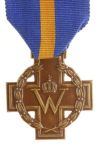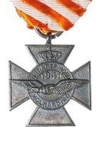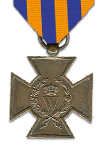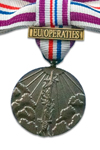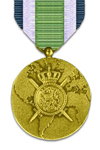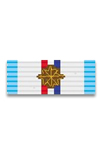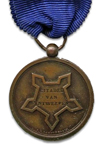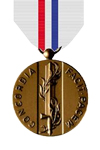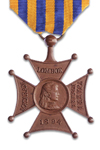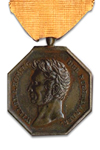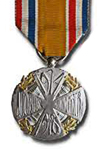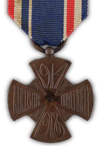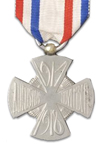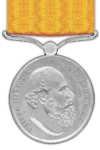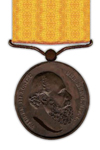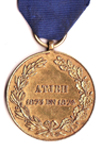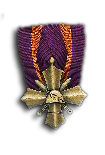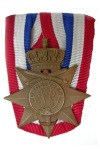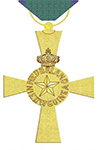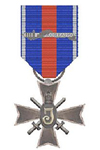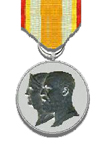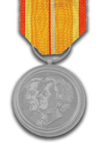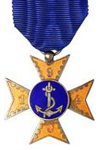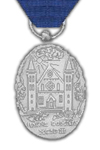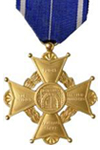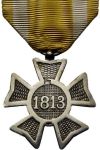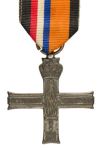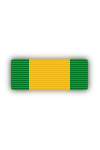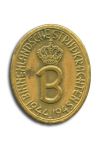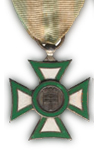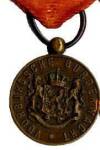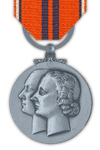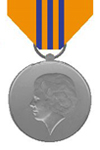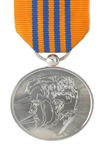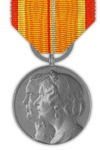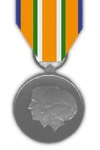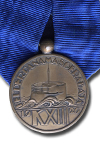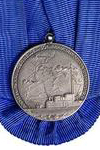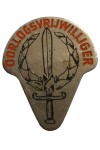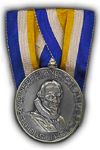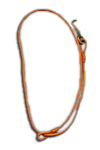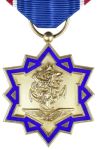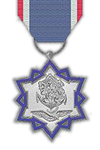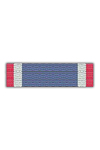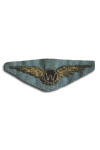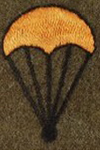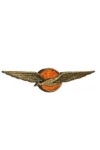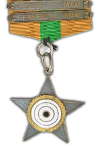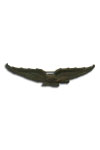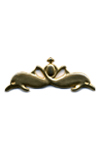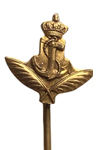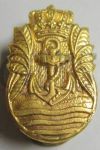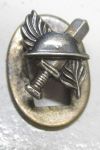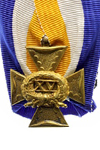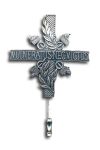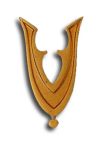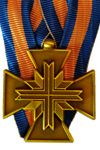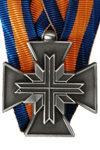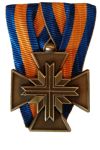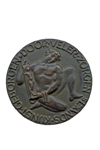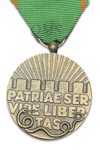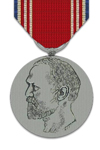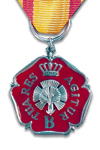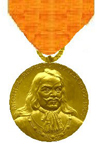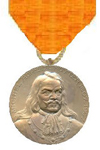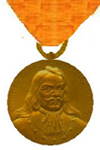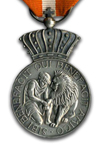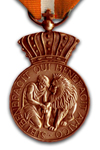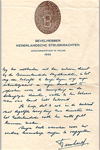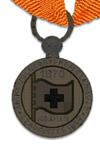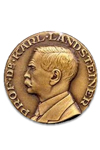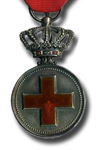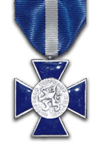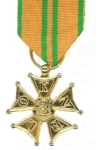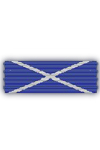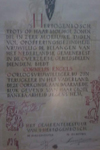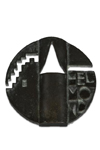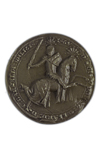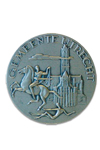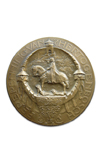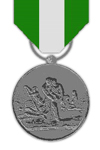Netherlands, the (1815-present, Kingdom)
History
The present Dutch system of decorations finds its origins in the institution of the Military Order of William (Militaire Willemsorde) and the Civil Order of Merit of the Dutch Lion. (Orde der Nederlandse Leeuw). Royal Warrants instituted these orders on 30 April 1815. Both orders were the direct consequence of the establishment of the Kingdom of the Netherlands in 1815, immediately after the end of French rule under Napoleon. However, these awards were not the first awards that were presented on Dutch territory.
The notion of Knighthood is a term that most people have in their imagination. The first written account of a presentation of a Knight's Order in the Netherlands dates back to July 15th 1279. That day Count Floris V awarded a Knighthood to 12 noblemen in the Ridderzaal (Knight’s Hall) in The Hague. These noblemen were awarded the Order of Saint Jacob. The decorations belonging to this title were a gilt silver necklace with shells and a medallion with the image of Saint Jacob. The Order of the Golden Fleece (Gulden Vlies) became the next award with some sort of importance. Philips de Goede instituted this award on January 10th 1430 at Brugge. These orders were reserved for noblemen. The Golden Fleece was split up after 1701 in a Spanish and an Austrian branch, respectively granted by the Spanish Monarch and the Archduke of Austria. The Order of the Golden Fleece still exists and is awarded by the Spanish Monarch, mainly to other Monarchs.
Between 1568 and 1795, at the time of the Republic of the Seven United Netherlands, there were no Knight's Orders. After all, it was customary that Knight's Orders were awarded by Monarchs and not by a Republic. In this period, it was customary to commemorate a prominent event with an Occasion Medal. In general, these were designed in gold. In 1628 the first award that was intended to reward a person's merit for the country was designed by the Dutch parliament. This award was commonly known as the Ambassadors’ Medal. The highest rank of this award became the Republic’s alternative for the Knight's Orders.The Fourth English War between 1780 and 1784 reached its climax in the Battle at Doggersbank in 1781. The Dutch victory was the reason Stadhouder Willem IV designed the first medal with a ribbon, the Doggersbank Medal. It was a medal, which was suspended from an orange or a red, white and blue colored ribbon. With this ribbon, the Doggersbank Medal more or less became the example for the future series of awards.
During the Batavian Republic (1795-1806) there were no major developments in the Dutch system of honours. This changed when in 1806 Lodewijk Napoleon became King of the Netherlands. In December 1806, he instituted the Grand Order of the Union and the Order of Merit of the Kingdom of Holland. Finally, due to an intervention of his brother Napoleon Bonaparte, both Orders were combined to the Royal Order of Holland, which was renamed the Order of the Union in 1808. The Order of the Union consisted of three classes (Grand Cross, Commander and Knight) for officers and two medals (Gold and Silver) for persons of lower ranks. When Holland became part of the French Empire in 1811, the French Ordre Impérial de la Réunion replaced the Order of the Union. When the son of Stadhouder Willem V was declared a sovereign Monarch on November 30th 1813, a situation of local fights between withdrawing French troops and units loyal to Orange aroused in the Netherlands. These fights formed the cause for the institution of various medals, which were later on transformed into official decorations. The fights against Napoleon in the next campaigns in northern France also gave cause to the institution of new medals. These medals commonly bore the text "For Courage and Patriotism" (voor Moed, Beleid en Trouw) in Dutch and can be seen as the example for the Military Order of William.
The Kingdom of the Netherlands under the new King, King Willem I, pretty soon wanted the institution of a Knight's Order. The Dutch army comprised 325 bearers of the French Legion d’Honneur, and it was desirable that this honour would be carried further onwards. Furthermore the King wanted to have the possibility of rewarding people’s gallantry. As such, the Military Order of William was instituted on April 30th 1815. Next to this highest Dutch decoration for bravery, the Order of the Dutch Lion was instituted. Where the Military Order of William was exclusively awarded to soldiers, the Order of the Dutch Lion was meant as a civil decoration.
The Belgian fight for freedom from 1830 until 1832 was the reason for the presentation of huge numbers of the Military Order of William. Because of this, the appreciation for the award diminished. To prevent this, a rule was taken up in the Law for the Military Order of William, which indicated that not every action of bravery automatically led towards the presentation of the Military Order of William. It was also possible to register the act of bravery as an Honorable Mention. However, these rules were ineffective. The main reason was the fact that the Honorable Mention could not be worn. To solve this, an addition was made in the form of a Crown-pin, which could be worn on the ribbon of another decoration. Furthermore various other so-called awards for bravery were instituted. As such, in 1839 the Medal for Courage and Fidelity came into being, especially meant for native soldiers of the Royal Dutch East-Indies Army (KNIL) who had been excluded from the MWO. In 1898 the silver and bronze medals were replaced by the more beautiful Cross for Courage and Fidelity in silver and bronze. In 1855 a Sable of Honor was instituted. The recipients of this sable could wear an insignia of two crossed sables covered with the Royal Crown, on the ribbon of the Cross for Important Battle Actions (later became a new War Commemorative Cross) that was instituted in 1869. For the same Cross for Important Battle Actions the insignia of the Honorable Mention, the Crown, was designed.
In the following years various Commemorative Medals were designed and instituted. They were mostly instituted in remembrance of battles or wars. An important award in this area was the Cross for Important Battle Actions; this was because the insignia of the Sable of Honor and the Honorable Mention could be worn on its ribbon. The Cross for Important Battle Actions became a standard decoration; the battles in which the recipient had participated were indicated by means of buckles with an inscription. The buckles were worn on the ribbon. However, the Cross for Important Battle Actions was discontinued during the Second World War and was finally replaced by the War Commemorative Cross (OHK) that was presented from 1944 onwards.
On April 12th 1940, inspired by the changes in warfare, the Law for the Military Order of William was amended and the Honorable Mention was abolished. However, the events on May 10th 1940 prevented the system from being changed. After the capitulation, the Dutch Government in Exile finally revised the system of honours. The Government Council decided to institute a War Decoration on May 20th 1940, and a Royal Warrant instituted the Bronze Cross (BK) on June 11th 1940. The Honorable Mention could be attached to the ribbon of the Bronze Cross. The Bronze Cross was a military medal. A commission was formed on October 8th 1940, to reward the acts of Merchant Navy personnel. This led to the institution of the Cross of Merit (KV) on February 20th 1941.The formation of the commission and the popularity of the Cross of Merit led to another change of the Law for the Military Order of William and the formation of a Commission for Military Decorations (CMO). This commission came with a complete revision, through which especially military performances were valued highly. However, by personal intervention of Queen Wilhelmina a new system of honours was instituted in 1944.
Still, the Military Order of William was the highest decoration. The Bronze Lion, that replaced the Honorable Mention, then followed the Military Order of William. The Bronze Cross was the next decoration on the list, followed by the Cross of Merit and the new Dutch Flying Cross. In this way, a series of decorations for bravery was established which could distinguish soldiers and citizens in reasonable balance.
After the Second World War, the wish arose to distinguish members of the resistance. To this end, two decorations were instituted, the Resistance Cross, that was classified immediately after the Military Order of William, and the Resistance Star East Asia, which was classified directly after the Bronze Lion.
The Netherlands in the Second World War
The Netherlands became involved in the Second World War on May 10th 1940. That day the German Army invaded the Netherlands. After five days of fierce fighting and the bombing of the city of Rotterdam, the Dutch Army finally capitulated on May 14th 1940. However, it was not untill May 17th 1940 that the whole of the Netherlands fell into German hands.
The Dutch Government and the Royal House fled to England and formed a Government in exile in London. This was necessary because of the Dutch Overseas Territories, namely Suriname, the Dutch Antilles and the Dutch East-Indies. In January 1942 the Dutch-East Indies were invaded by Japan and the remaining Dutch forces evacuated to Australia.
Dutch units fought together with the Allied troops in Europe and Asia. The Netherlands and Dutch East-Indies were finally liberated in May and August 1945.
Order of precedence of Dutch decorations (the list only contain the most common decorations of the Second World War or with any connection towards the Second World War):
Militaire Willems-Orde MWO
Verzetskruis VZK
Erepenning voor Menslievend Hulpbetoon
Orde van de Nederlandse Leeuw ONL
Orde van Oranje-Nassau ON
Huisorde van Oranje HO
Eervolle Vermelding EV
Bronzen Leeuw BL
Verzetsster Oost-Azië VOA
Bronzen Kruis BK
Kruis van Verdienste KV
Vliegerkruis VK
Erepenning voor Menslievend hulpbetoon (zilver en brons)
De Ruytermedaille
Erepenning voor Verdiensten jegens Openbare Verzamelingen (Museummedaille)
Medaille van het Rode Kruis (Regeringsmedaille)
Erkentelijkheidsmedaille
Oorlogsherinneringskruis OHK
Verzetsherdenkingskruis VHK
Mobilisatie-Oorlogskruis MO
Onderscheidingsteken voor Langdurige Dienst als Officier (Officiersdienstkruis)
Onderscheidingsteken voor Langdurige en Trouwe Dienst (Trouwe Dienst Medaille)
Ereteken Meester-Scherpschutter
KNIL-onderscheidingen
Vaardigheidsmedaille KNIL
Schietprijsster
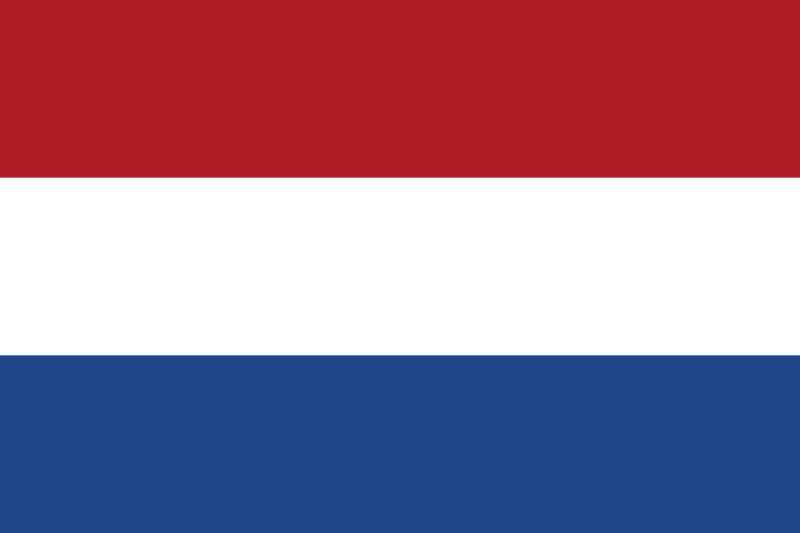
Orders
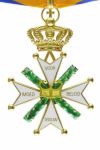
In the database: 2
Issued:154
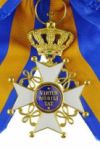
In the database: 34
Issued:unknown
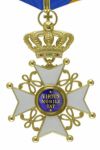
In the database: 9
Issued:unknown
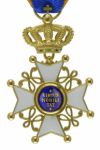
In the database: 82
Issued:unknown
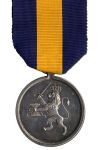
In the database: 0
Issued:unknown
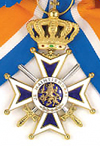
In the database: 40
Issued:unknown
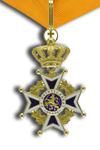
In the database: 29
Issued:unknown
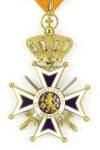
In the database: 87
Issued:unknown
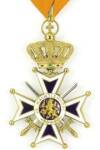
In the database: 187
Issued:unknown
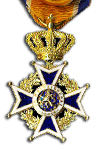
In the database: 151
Issued:unknown
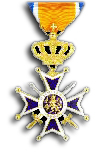
In the database: 365
Issued:unknown
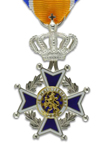
In the database: 96
Issued:unknown
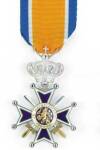
In the database: 196
Issued:unknown
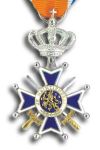
In the database: 10
Issued:unknown
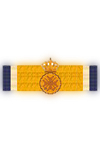
In the database: 24
Issued:unknown
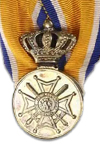
In the database: 40
Issued:unknown
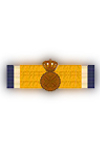
In the database: 36
Issued:unknown
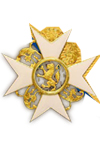
In the database: 3
Issued:unknown
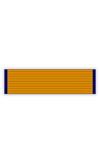
In the database: 1
Issued:unknown
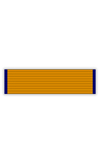
In the database: 1
Issued:unknown
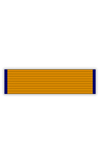
In the database: 1
Issued:unknown
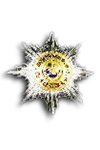
In the database: 1
Issued:unknown
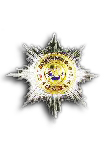
In the database: 5
Issued:unknown
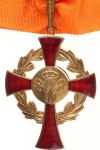
In the database: 3
Issued:unknown
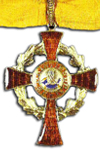
In the database: 4
Issued:unknown
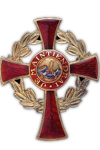
In the database: 2
Issued:unknown
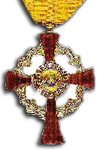
In the database: 2
Issued:unknown
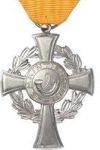
In the database: 1
Issued:unknown
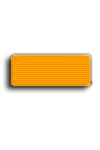
In the database: 9
Issued:unknown
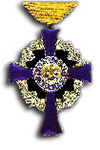
In the database: 3
Issued:unknown
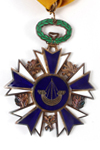
In the database: 1
Issued:unknown
Bravery Decorations (no orders)
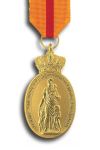
In the database: 3
Issued:unknown
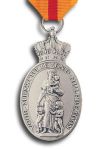
In the database: 5
Issued:unknown
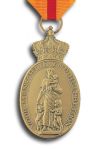
In the database: 25
Issued:unknown
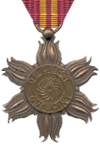
In the database: 96
Issued:470
Campaign and Service Awards
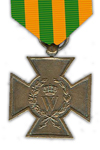
In the database: 8
Issued:unknown
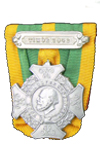
In the database: 31
Issued:unknown
Commemorative- / Jubileemedals

Issued:unknown
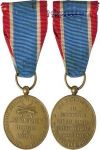
In the database: 0
Issued:unknown
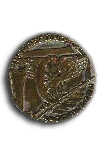
In the database: 2
Issued:unknown
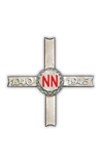
In the database: 22
Issued:109
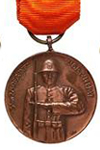
Issued:unknown
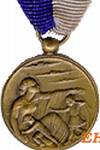
In the database: 5
Issued:unknown

In the database: 0
Issued:350
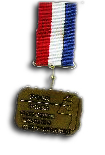
In the database: 0
Issued:unknown
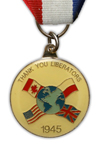
In the database: 6
Issued:unknown

In the database: 1
Issued:unknown
War and Service Decorations Defense
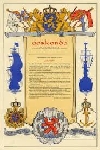
In the database: 9
Issued:unknown
War and Service Decorations Army
War and Service Decorations KNIL
War and Service Decorations Navy
Long and Faithfull Service Medals
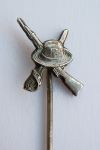
Issued:unknown
Onderscheidingsteken voor langdurige, eerlijke en trouwe dienst
Medal for Long, Honest and Faithfull Service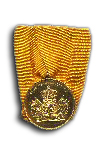
In the database: 5
Issued:unknown
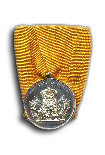
In the database: 4
Issued:unknown
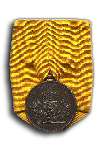
In the database: 7
Issued:unknown
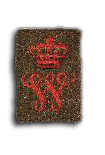
In the database: 1
Issued:unknown
Onderscheidingsteken voor langdurige, eerlijke en trouwe dienst KNIL
Medal for Long, Honest and Faithfull Service KNIL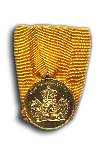
In the database: 6
Issued:unknown
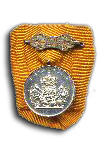
In the database: 3
Issued:unknown
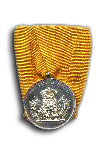
In the database: 5
Issued:unknown
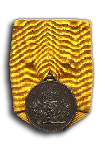
In the database: 3
Issued:unknown
Onderscheidingsteken voor langdurige, eerlijke en trouwe dienst bij de Zeemacht
Medal for Long, Honest and Faithfull Service with the Navy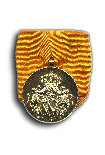
In the database: 0
Issued:unknown
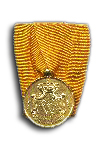
In the database: 9
Issued:unknown
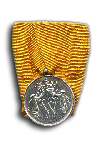
In the database: 5
Issued:unknown
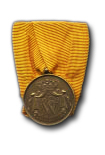
In the database: 8
Issued:unknown
Onderscheidingsteken voor langdurige, eerlijke en trouwe dienst bij de Marine-Kustwacht
Medal for Long, Honest and Faithfull Service with the Navy Coastguard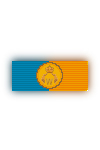
In the database: 0
Issued:unknown
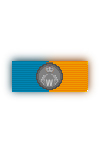
In the database: 0
Issued:unknown
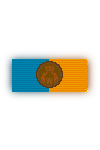
In the database: 0
Issued:unknown
Wounded and Passed-Away Awards

In the database: 2
Issued:unknown

In the database: 0
Issued:unknown

In the database: 0
Issued:unknown

In the database: 0
Issued:unknown
Veteran Awards
Civilian Decorations
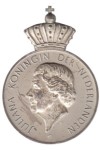
In the database: 0
Issued:unknown
Red Cross

In the database: 21
Issued:unknown
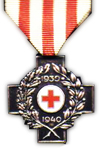
In the database: 0
Issued:unknown
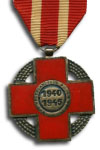
In the database: 28
Issued:unknown
Sports Decorations
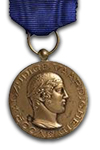
In the database: 8
Issued:unknown
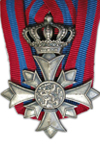
In the database: 5
Issued:unknown
Bondskruis van de Nederlandse Bond voor Lichamelijke Opvoeding
Cross of the Dutch Commitee for Physical Education
In the database: 0
Issued:unknown

In the database: 1
Issued:unknown

In the database: 1
Issued:unknown
Community Decorations
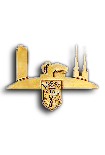
In the database: 1
Issued:unknown
Royal Netherlands Sea Rescue Institution
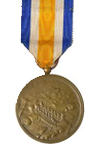
Issued:unknown
